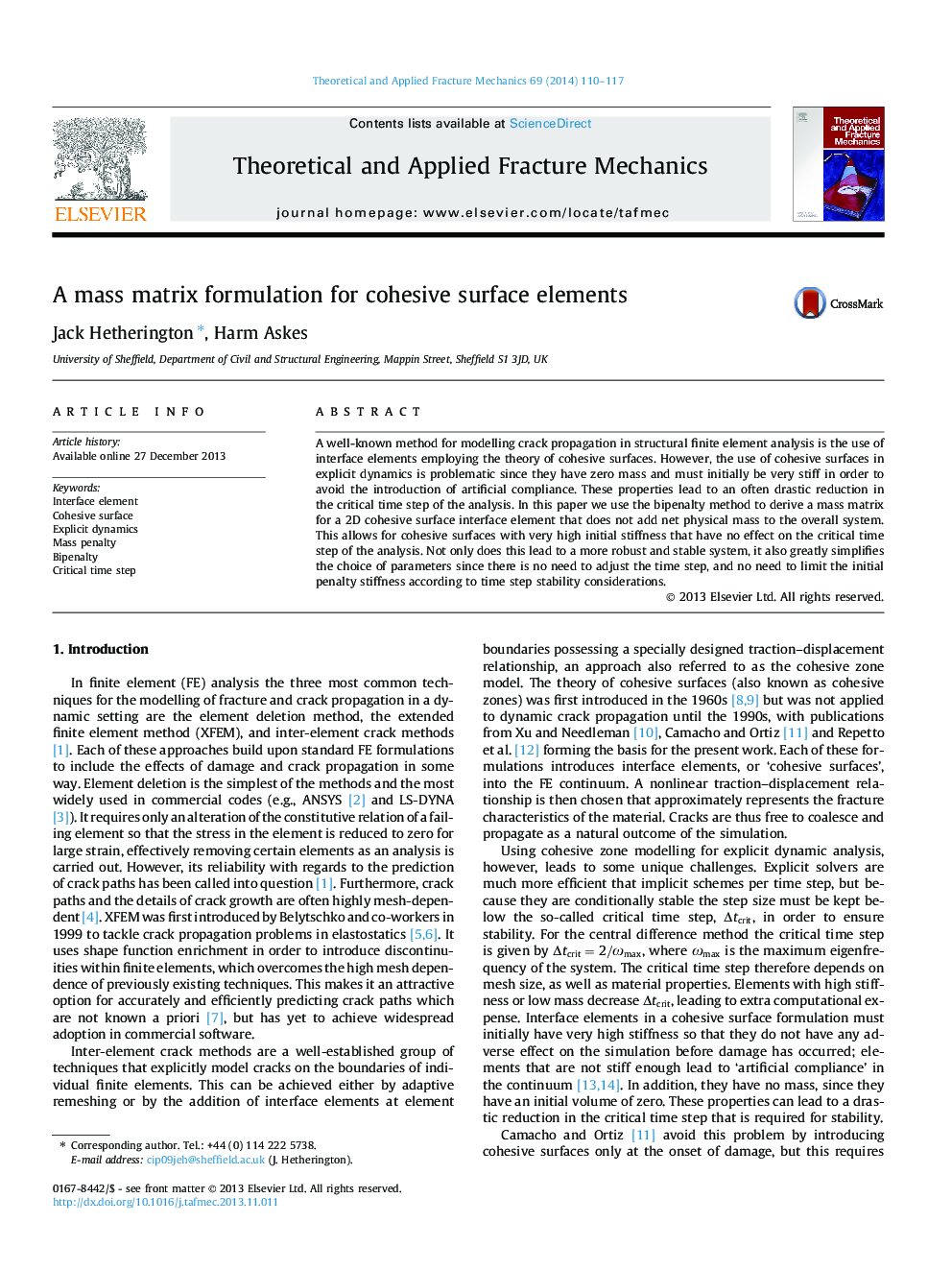| Article ID | Journal | Published Year | Pages | File Type |
|---|---|---|---|---|
| 808739 | Theoretical and Applied Fracture Mechanics | 2014 | 8 Pages |
A well-known method for modelling crack propagation in structural finite element analysis is the use of interface elements employing the theory of cohesive surfaces. However, the use of cohesive surfaces in explicit dynamics is problematic since they have zero mass and must initially be very stiff in order to avoid the introduction of artificial compliance. These properties lead to an often drastic reduction in the critical time step of the analysis. In this paper we use the bipenalty method to derive a mass matrix for a 2D cohesive surface interface element that does not add net physical mass to the overall system. This allows for cohesive surfaces with very high initial stiffness that have no effect on the critical time step of the analysis. Not only does this lead to a more robust and stable system, it also greatly simplifies the choice of parameters since there is no need to adjust the time step, and no need to limit the initial penalty stiffness according to time step stability considerations.
